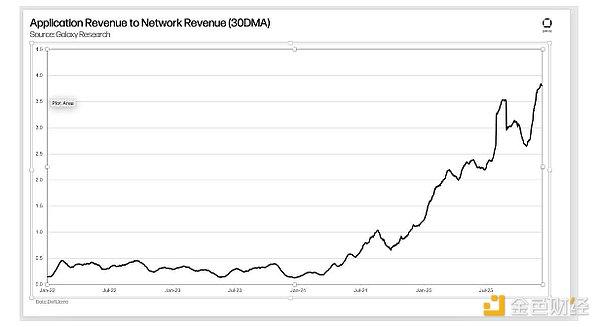
Sky is the latest decentralized finance (DeFi) protocol launched by the MakerDAO team. As a pioneer of decentralized autonomous organizations (DAOs) and stablecoin innovation, MakerDAO launched the world's first decentralized stablecoin Dai (DAI) as early as 2017. The development of the Dai stablecoin has driven the rise of the DeFi ecosystem, becoming a bridge for users to enter the DeFi world.
However, as global regulatory trends have become increasingly stringent, MakerDAO has faced the balance between compliance and decentralization. Therefore, MakerDAO founder Rune Christensen initiated the "Endgame" plan, aiming to further decentralize the protocol and reform its governance structure, upgrading MakerDAO to the brand-new Sky. Sky not only continues the idea of decentralized stablecoins, but also introduces support for real-world assets (RWA), designing a dual-stablecoin strategy to better adapt to the current market demands and regulatory environment.
This article will delve into the background of Sky's creation, the historical significance of MakerDAO, the key upgrades in the new protocol, and how these changes will impact the DeFi ecosystem and user experience.

The Historical Significance of MakerDAO and the Application of Dai in DeFi
MakerDAO is one of the earliest decentralized autonomous organizations in the cryptocurrency field, and its pioneering Dai stablecoin has fundamentally changed the infrastructure of DeFi. As a fully decentralized stablecoin, Dai does not rely on a centralized reserve of funds, but rather achieves price stability through an over-collateralization mechanism, where users can mint Dai by using cryptocurrency assets (such as ETH or BTC) as collateral. The stability of Dai stems from its smart contract mechanism, which ensures that Dai can remain stable around $1 in most cases, becoming the base currency in the DeFi world.

The decentralized nature and stability of the Dai stablecoin have made it an important asset in DeFi applications. Here are the main application scenarios of Dai in the DeFi ecosystem:
1.Lending platforms: On DeFi lending platforms like Compound and Aave, users can use Dai for loans and collateral, thereby earning additional yields or liquidity. The liquidity pools on these lending platforms that use Dai as collateral allow users to freely borrow or lend funds.
2.Liquidity mining: DeFi projects generally allow users to provide Dai to liquidity pools, providing liquidity to the platform and earning mining rewards. Liquidity mining is very common in DeFi protocols, and the role of Dai in these protocols means that its value is not limited to the stablecoin itself, but has become an important tool for participating in the DeFi ecosystem.
3.Cross-platform payments: The stability and openness of Dai have made it a payment tool, allowing users to conduct transactions in decentralized applications and avoid price fluctuation risks. The stablecoin nature of Dai makes it perform stably in payment scenarios and trading activities within the DeFi ecosystem, facilitating transfers and transactions between different platforms.
The emergence of Dai not only expanded the financial boundaries of DeFi, but also became an important tool for users to participate in DeFi applications, enabling the formation of a fully decentralized financial system. These application scenarios demonstrate the importance of Dai and the foundation laid by MakerDAO in the DeFi world.

Why is MakerDAO Transforming into Sky?
In 2022, MakerDAO founder Rune Christensen proposed the "Endgame" plan, aiming to undertake deep-level reforms to address the governance challenges facing MakerDAO. As the cryptocurrency market has developed rapidly, global regulatory efforts have also been gradually strengthened. Finding a balance between compliance and decentralization has become the core issue facing MakerDAO. Therefore, the MakerDAO team decided to upgrade to the brand-new Sky, with a comprehensive overhaul of its structure, governance tokens, and stablecoin mechanisms.

Key Changes in Sky
1.Dual Stablecoin Strategy: USDS and PureDAI
Sky has introduced a dual-stablecoin strategy, consisting of USDS and PureDAI. USDS is a stablecoin supported by real-world assets (RWA), allowing for more compliant operations and meeting the market's higher demand for stability. PureDAI, on the other hand, is a fully decentralized stablecoin, unaffected by any regulations, designed for users who prioritize the spirit of decentralization.
2.The Launch and Splitting of Governance Token SKY
In Sky, the original governance token MKR has been split into 24,000 new governance tokens called SKY. This splitting allows more users to participate in governance, lowering the participation threshold and making the protocol's governance more representative. This change not only enhances the protocol's democracy, but also makes community participation more widespread.
3.Multi-SubDAO Architecture
Sky has created multiple SubDAOs, each focused on developing different application scenarios, such as asset management, lending, and the onboarding of real-world assets. This multi-SubDAO architecture allows each branch to better adapt to different market demands, while maintaining the overall decentralized nature of the protocol.

The Reversible Exchange Between SKY and MKR: Guaranteeing User Flexibility
An important innovation in Sky is the ability for users to reversibly exchange between the governance token SKY and the old MKR. This design provides bidirectional flexibility, allowing users to choose the appropriate token based on market conditions.
The advantages of this exchange mechanism for users include:
1.Asset Protection: In unstable market environments, users can convert SKY back to MKR to avoid potential price fluctuation risks.
2.Multiple Choices: This design reflects Sky's commitment to user flexibility, allowing users to freely choose the tokens they hold based on their own needs and preferences.
3.Accommodating New and Old Users: Some early MKR holders may have concerns about the new governance structure of SKY, and the reversible exchange mechanism allows these users to participate in the new protocol's governance without abandoning their original tokens.
The reversible exchange mechanism between SKY and MKR provides flexible choices for Sky's governance structure, and also enhances user trust and security in the protocol, playing a positive role in the stable development of the protocol.

The Changes and Potential Risks Brought by Sky
Sky's innovations not only expand its functionality, but also help it achieve a better balance between compliance and decentralization. However, these changes also bring some potential risks:
1.The Freezing Mechanism of USDS
Although USDS is backed by real-world assets (RWA), which enhances compliance, it also introduces a freezing function. Under specific circumstances (e.g., regulatory requirements), USDS can be frozen by agreement. This feature makes USDS more akin to traditional finance's stablecoins (e.g., USDT, USDC), but may raise questions about its decentralized attributes, potentially reducing the trust of decentralization enthusiasts.
2.SubDAO Governance Challenges
While the SubDAO architecture enhances the protocol's flexibility and scalability, the governance model of each SubDAO may vary depending on the market and needs it serves, leading to the problem of governance complexity. Maintaining coordination among multiple SubDAOs and ensuring overall protocol consistency will be one of the challenges faced by Sky.
3.RWA Risks
Sky plans to introduce more real-world assets (RWA) into the protocol, which will help improve stability and strengthen compliance, but it also faces challenges such as regulatory changes and asset management risks. The inclusion of RWA may subject the protocol to additional constraints when dealing with traditional financial regulators, potentially affecting its decentralized nature.

Outlook for Sky's Future
Through its dual stablecoin strategy and SubDAO architecture, Sky has explored new possibilities for the integration of decentralized finance (DeFi) and real-world assets (RWA). In the future, it is expected to become a core pillar of DeFi applications and expand into broader areas such as asset management and asset tokenization. Sky's design makes it more competitive in diverse market demands and has the potential to become a driving force in the DeFi field.
Personal Perspective
I believe that Sky is a necessary upgrade by MakerDAO to address market changes and compliance requirements. The dual stablecoin strategy allows it to strike a balance between decentralization and compliance, while the reversible swap mechanism and SubDAO architecture provide users with more choices and flexibility. These innovations not only contribute to the long-term development of the protocol but also have the potential to attract more users to the Sky ecosystem.







